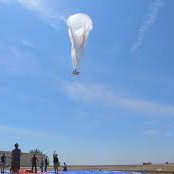These helium balloons will beam Internet connectivity to the areas which are not connected by the traditional copper or fibre optic networks.
Google’s helium Wi-Fi balloons are the most interesting technology we have seen
of late. Indian rural areas are all set to be embraced by this technology as Google is working to float these helium balloons in those areas to enable internet connectivity. All this will happen if the test proves successful, revealed a senior official of the company.
According to an ET report, Todd Rowe, managing director for global sales channels at Google, said, “Though we are still in the pilot phase, we have received several queries on the project and India has also shown great interest in the project.” He, however, remained tight lipped about the time frame of launching the project in the country. He said that the launch will depend on the success of the ongoing pilot project.
Known as Project Loon, this project was launched first in New Zealand earlier this month. The project aims to provide affordable Internet connectivity in the remote and rural parts. Under this project, several balloons will float around the earth at an altitude of 20 km, which is twice the height at which commercial aircraft fly. These balloons will beam Internet connectivity to the areas which are not connected by the traditional copper or fibre optic networks. A special equipment will be fixed on the roofs of the places to communicate with the balloon. This will act as a link between the two, providing the desired connectivity to the user.
Google has set up 30 helium balloons in New Zealand, where 50 test users have been allowed to access the Internet through the balloon network. Each helium balloon is 15-m-wide and is capable of staying in the air for around 100 days.
It is worth mentioning here that Google’s main business proposition is directly related to the number of Internet users. This is the reason why the search engine giant makes efforts of bringing more and more people to the Internet world and provides them with adequate connectivity too. Project Loon is one such project where the company claims that connection speeds will be equivalent to the 3G access provided by cellular networks. India is a hot market for Google with over 130 million Internet users, and around 900 million cell-phone users who are accessing internet via their mobile phones.
Yet another project from the company in this direction is Google Fiber, which aims to provide Internet at speeds of one gigabit per second. This kind of connectivity is great to download a high-definition movie in seconds. Google Fiber was launched in 2011 and is now available in three American towns. Rowe was speaking on the occasion of announcement of Google’s strategy for small and medium enterprises.







